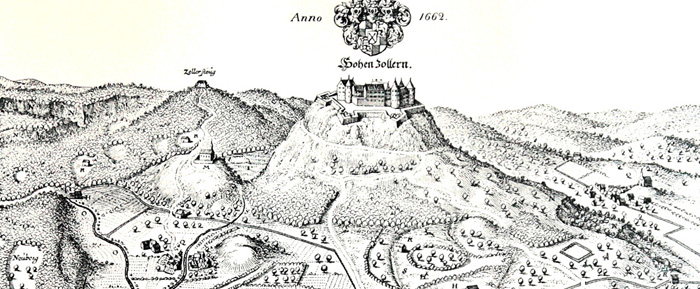
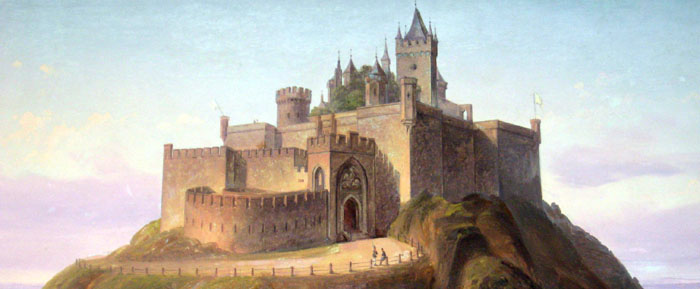
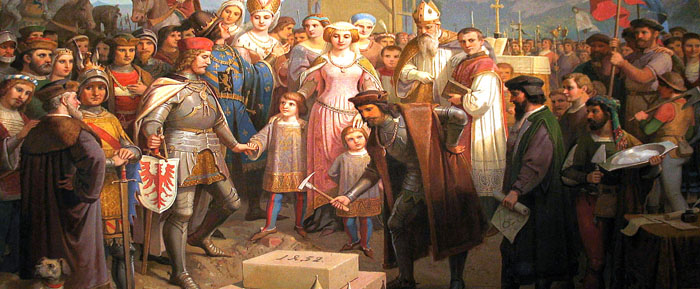
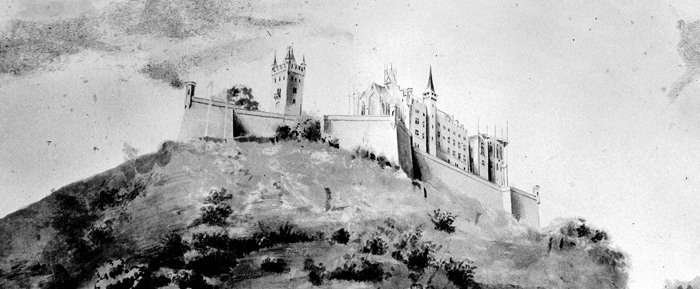

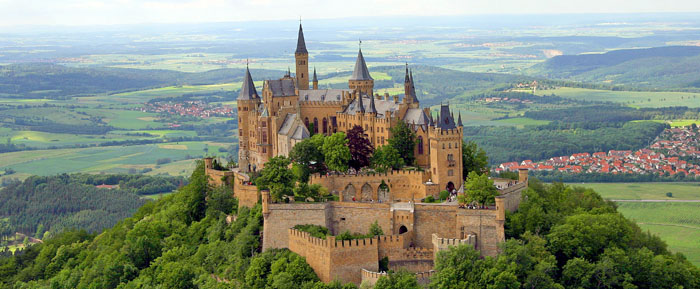
Castle History
The first personal related reference of the Hohenzollern House dates back to 1061 ("Wezil et Burchardus de Zolorin"). First direct mention of the Castle complex ("Castro Zolre") was in 1267. Appearance, size and furnishing of the original Castle are unknown, but presumably it was in the first decade of the 11th century. At that time it must have been a vast and artistically valuable furnished complex. Contemporary sources praised it as "Crown of all Castles in Swabia" and as "the most fortified House in Germany". However in 1423, the Castle was completely destroyed.
From 1454 the second Hohenzollern Castle was constructed bigger and even more fortified than before. Later, during the Thirty Years War, the Castle was converted into a fortress with repeatedly changing owners. Since the maintenance of the building was neglected, it dilapidated and turned into ruins at the beginning of the 19th century.
In 1819 Crown Prince Frederick William of Prussia decided to have the ancestral seat of the Hohenzollern House reconstructed. In 1844, being King Frederick William IV, he wrote in a letter: "The memories of the year 1819 are exceedingly dear to me and like a pleasant dream, it was especially the sunset we watched from one of the Castle bastions, ... now this adolescent dream turned into the wish to make the Hohenzollern Castle habitable again..."
From 1850 he put his long lasting dream into reality and created one of Germany’s most imposing Castle complexes in a neo-Gothic style. With its many towers and fortifications, it is an acclaimed masterpiece of military architecture in the 19th century. Additional civil architectural elements make it to a unique attraction. The location on the most beautiful mountain in Swabia, gives the Castle a picturesque appearance.
From 1952 Prince Louis Ferdinand of Prussia initiated to have the Castle furnished with valuable work of arts and historically significant hereditary pertaining to the history of Prussia and its Kings. In addition to paintings from renowned artists (Honthorst, Pesne, von Werner, von Lenbach and Laszlo), there is a display of gold- and silversmith works from the 17th to the 19th century.
In 1970 and in 1978 earthquakes caused immense damage to the Castle. Now and in the future all costs for maintenance, preservation and renovations have to be financed from the admission fees. The Castle complex presents itself to visitors from all over the world well maintained and in perfect structural condition.
